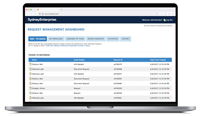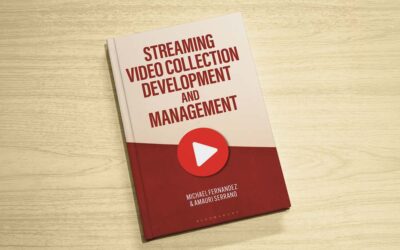Interview with Author and Librarian Dr. Jae Rossman on Special Collections and Archives
Lauren Hays
Dr. Jae Rossman wrote Access to Special Collections and Archives, available now from Rowman and Littlefield. The book is an excellent resource for special librarians who work with special collections and archival materials.
My interview with her is below.
Please introduce yourself to our readers.
I am a librarian, historian, and artist who has been working in academic libraries for over 25 years. I am currently the associate director for Special Collections Instruction and Research Services at the Beinecke Rare Book & Manuscript Library at Yale University. I have also been the director of area studies and humanities research support, and the head of special collections at the Robert B. Haas Family Arts Library, both at Yale. Before coming to Yale, I worked in the libraries of Brandeis University and the Museum of Fine Arts, Boston.
I have published on library history and practice as well as the field of artists’ books for over twenty years. My publications through my small press—the jenny-press—have been collected by academic libraries nationally and internationally. I regularly publish in peer-reviewed journals and contribute chapters to academic publications. I have also contributed to the profession through service, including on the Board of Trustees, American Printing History Association and the Board of Directors, Center for Book Arts.
Briefly summarize Access to Special Collections and Archives.
Since the early 20th century, American academic libraries have collected and championed rare and unique non-circulating materials now referred to as special collections. Because of the rarity and value of these materials, they are handled differently than materials in other parts of academic library collections. Thus, a different set of access policies and procedures, as well as specialized staff, have been employed.
This book provides a thorough exploration of access, which is a cornerstone of the library profession. It looks at how practitioners’ perceptions of access to special collections have changed from the formative period of the 1930s to today. Using a grounded theory approach on datasets comprised of LIS literature and interviews of special collections professionals with between 5 and 50 years of experience, two conceptual models developed.
The two conceptual models are:
- Aspects of Access, which defines ten components that contribute to access goals: Diversity, Documentation, Engagement, Preservation, Protection, Provision, Readers, Spaces, Stewardship, and Technology. A historical overview sets the stage for in-depth discussion of each aspect.
- Gatekeeping Model of Access, which applies gatekeeping theory to chart how the Aspects of Access support or hinder the connection of readers to collection materials.
An exploration of access through the lens of special collections is especially meaningful because of the tension between the principles of preservation and access within the special collections community.
This project is also significant as the library profession explores how representation of diversity within collections and the profession affects readers. Exploring how we think about access should be part of these ongoing conversations.
Why did you decide to write this book?
When I was in the LIS PhD program at Simmons University, I realized that the way I approach visual image making—looking for patterns that I see when I take in information from a variety of (visual) sources—could be applied to data. I just needed to learn the tools and methodologies. That allowed me to add a data-informed component to historical research approaches with which I was already working.
I first tried this with a paper that included a network analysis of citations in mid-20th century literature on the rare book room. I presented it at the “Past, Present, and Future of Libraries” conference hosted by the American Philosophical Society in 2018 (proceedings published by APS in 2022). I was surprised by some of the attitudes expressed in the early literature such as the need to protect “early editions” from the “all-devouring maw of the undergraduate” (John Cook Wylie, 1949). This seemed the opposite of how my colleagues and I think about connecting readers with special collections material and inspired me to ask the question about how the idea of access has changed over time in our subset of librarianship.
So curiosity was the impetus for my research, but I then felt the findings could make a valuable contribution to the profession. I think it is important to publish one’s findings so they can be cited by professionals to support their day-to-day work—especially if they need to educate administrators unfamiliar with special collections’ needs and challenges.
How have you seen the conversation about access to special collections change during your career?
I started as a professional librarian in 2000, so my on-the-job experience is focused on the 21st century. From the beginning of my career, and ongoing, the conversation about access has been focused on how to make it easier to connect readers and collections. This contrasts with what I found in the LIS literature of the late 20th century, which argues who a reader can be. I surmised that conversation was in response to the earlier 20th century discussion of who a reader shouldn’t be (as I shared in question #3). That’s a historical change I found in the literature.
Within the 21st century conversation about improving existing access, in which I’ve been able to directly participate, two themes frequently recur: outreach and technology. I’ll talk more about technology below. Outreach has become increasingly important as librarians have realized that you can’t just sit around and wait for folks to show up. Well, you can, and many places used to do that. But if one wants to be proactive about meeting their institutional goals, one has to actively seek participants and readers to be engaged with their work. That’s the biggest change I experienced personally.
How do you see access to special collections changing in the future?
In some respects, I don’t see the basic principles of access to special collections changing extensively. These are components which are based on principles that originate outside of the library, such as risk management. I write about special collections embedded in academic libraries, which means they are also embedded in a larger institution. So they are beholden to the policies and culture of that place. Certain changes in special collections access would mean also effecting culture change in the home institution and that is not often possible. Although I have hope that these principles will be at least re-examined so we can understand if they truly match our profession’s culture and, if not, why we are abiding by these concepts.
One change I’m happy to see is that access is becoming more nuanced, less of a one-size-fits-all approach. This is a result of outreach, as mentioned above; if one is more actively conversing with readers, one is also learning what their needs and wants are. This in turn allows there to be local context in decision making with solutions tailored to specific places and people.
How is technology impacting access to special collections?
I have already mentioned technology as an important theme in the 21st century. Of course, it’s been a theme in librarianship from the beginning of the profession. For example, at the second annual ALA conference in 1877 there was a discussion about if use of typewriters should be embraced for cataloging. It was a major theme in my conversations with practitioners and it is frequently touched upon in the literature.
Technology is so embedded into our work in librarianship, of any kind, that it can be hard to pull it out to look at its impact. There are big efforts that take up a lot of our professional bandwidth, such as the technology around digitization and the storage, preservation, and delivery of the resulting images and metadata.
Less obvious infiltrations of technology into librarianship often mirror the technological infiltration of our daily lives, such as how we create accounts and share our personal information in order to gain access to special collections. Fortunately, concerns about reader privacy have been embedded into librarianship for a long time.
The impact of technology is immeasurable as it becomes inseparable from our basic functions. I hope my work will help special collections practitioners pinpoint when they are choosing technological implementation (and the resources necessary to maintain it) to support a larger goal and how that choice intersects/impacts the other aspects of access. Use of technology isn’t the goal; it’s what the technology is supporting. How do we keep the focus on that when the implementation and maintenance of technology take a lot of time, resources, and effort?
In what ways do you foresee special collections librarianship adapting to different access needs?
I’m looking forward to special collections practitioners imagining additional ways to address the needs of different communities. How can we allow for more variety in interactions in the reading room with special collections on a regular basis, not just in a case-by-case, reactive way?
Right now we serve primarily the solo, silent scholar sitting in stillness in our reading rooms. There is certainly a place for this tradition. It can be empowering for students to learn that they are just as welcome in the reading room as their professors. Practicing the tradition of quiet, slow looking and asking questions of an object can be transformative for how students approach their research and learning.
Yet there are many other ways that folks may want to interact with objects—and people—while doing research and learning. How are we going to make space for these also authentic interactions with collections without making folks feel like they have to ask for specialized treatment or for an exception? Special collections practitioners are often doing this work in other ways, such as in classrooms or through outreach activities. These very interactive programs are often designed to invite folks into our reading rooms. What happens when they arrive and find the experience is different from what attracted them? What happens if they have different needs for interaction with the collections than is currently supported?
I don’t have the answer, but I hope my book will provide encouragement and support for those who are trying to find solutions.
Is there anything else you would like to share?
Access can feel like a daunting and sometimes monolithic concept. By creating multiple avenues to approach the topic, I aspire to invite a diversity of voices and communities to the conversation about the future of special collections.
I hope my models will help the profession have more nuanced conversations about access. They are tools that reflect my findings based on several years of research. The purpose is to open conversation—including disagreement—and not to dictate how any library should run their facilities and programs.
Lauren Hays
Dr. Lauren Hays is an Assistant Professor of Instructional Technology at the University of Central Missouri and a frequent presenter and interviewer on topics related to libraries and librarianship. Please read Lauren’s other posts relevant to special librarians. Learn about Lucidea’s powerful integrated library systems, SydneyDigital and GeniePlus, used daily by innovative special librarians in libraries of all types, sizes, and budgets.
**Disclaimer: Any in-line promotional text does not imply Lucidea product endorsement by the author of this post.
Never miss another post. Subscribe today!
Similar Posts
Growing Your Leadership Skills: 7 Tips for Special Librarians
Great library leaders aren’t born—they’re made through learning self-reflection and practice. Here are seven strategies to help you grow and lead with impact.
Keeping Up with Copyright and Generative AI: What Special Librarians Need to Know
As generative AI becomes more prevalent copyright law is evolving to address its impact. A new report from the U.S. Copyright Office provides guidance on what is (and isn’t) copyrightable.
Understanding Shadow AI: Risks Costs and Governance
AI can enhance search discovery and efficiency but unsanctioned adoption—known as “shadow AI”—can lead to budget overruns and compliance risks. Here’s how to evaluate AI pricing models and build a governance strategy that balances innovation with cost control.
Interview with an Author: Fernandez on Streaming Video Collection Development
As demand for streaming video in libraries grows so do the challenges of managing access budgets and licensing. Co-author Michael Fernandez shares key insights from his book “Streaming Video Collection Development and Management”.







Leave a Comment
Comments are reviewed and must adhere to our comments policy.
0 Comments